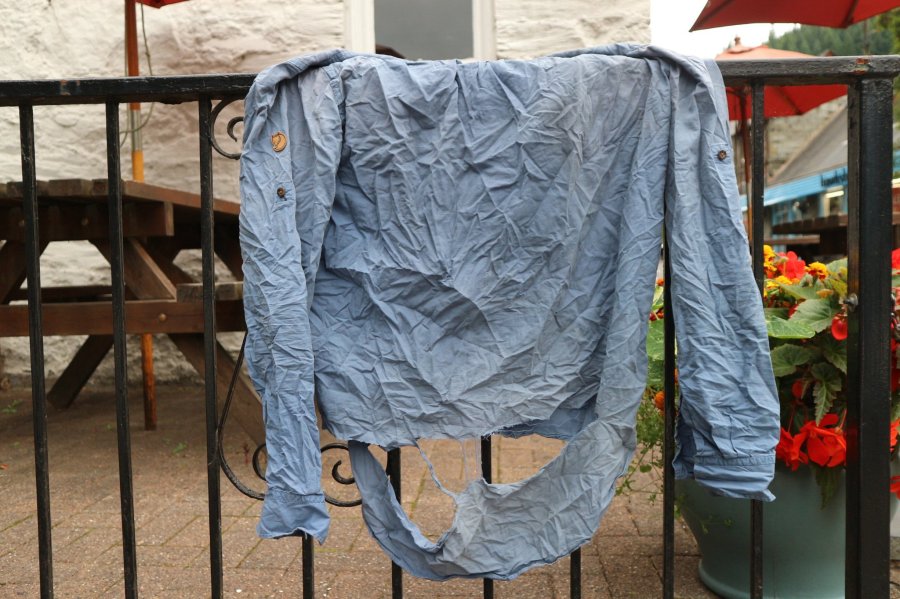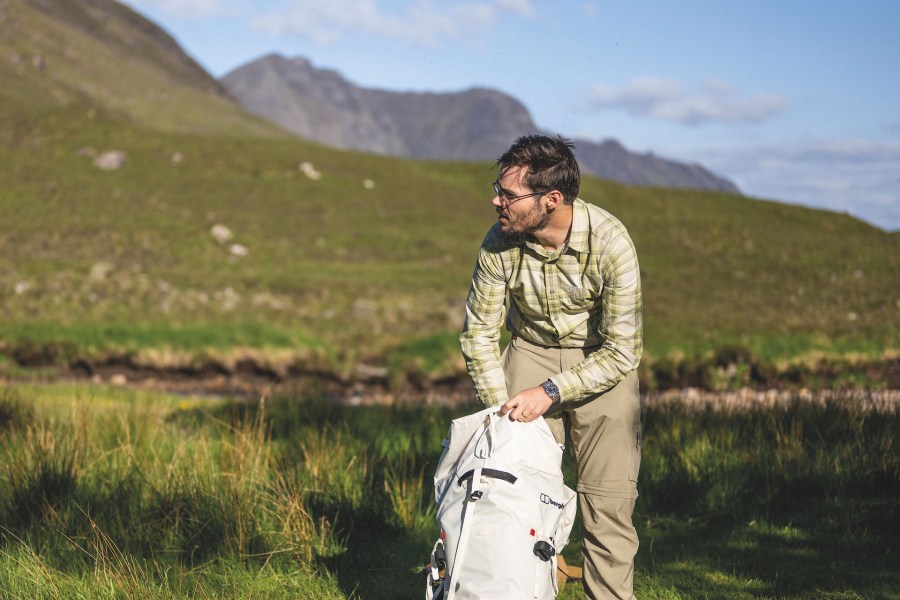Everyone at some point in their lives will have stepped outdoors and immediately regretted wearing a shirt that’s too thick, too thin or just not right for the conditions. In day-to-day life that wrong choice can just be a nuisance, whereas with hiking it can have a big impact on our performance, comfort and enjoyment of the day – or perhaps even a whole trip.
With numerous options available, each designed for specific purposes and seasons, it’s essential to understand the key factors to consider when buying a hiking shirt, so in this article, I’m going to help you to select the ideal hiking shirt that suits your needs, focusing on material choices, fit and comfort and essential features.
Material matters
When it comes to hiking shirts, selecting the right material is paramount. Two popular options are synthetic fabrics like polyester or nylon and natural fibers like merino wool.
Synthetic shirts
Synthetic materials excel in moisture-wicking and quick-drying properties, making them ideal for hot and humid conditions or intense physical activities. Lightweight, durable, and offering good breathability, synthetic shirts are also highly versatile and can be engineered to meet specific performance needs. They can be blended with other materials, for instance, or treated with coatings to enhance their water repellency, wind resistance, or UV protection, making them adaptable to different weather conditions.
Pros: durable, moisture wicking, fast-drying, often lightweight, lower cost
Cons: can get smelly, can be bad for the environment
Merino wool shirts
Merino wool, on the other hand, is a natural insulator, providing warmth in cooler temperatures but also temperature regulation in warmer conditions thanks to its moisture-wicking abilities. It’s naturally odor-resistant too and provides some level of UV protection. On top of all that. Merino is a soft material that’s comfortable to wear, so long as you don’t have a wool allergy. I personally love merino wool as it allows me to wear shirts over and over again without having to wash them – that’s ideal when I’m on a multi-day hike and don’t want to carry loads of clothing changes of clothes.
Pros: natural, temperature regulating, odor-resistant, comfortable, moisture wicking
Cons: not suitable for vegans, sometimes too warm, expensive
Polycotton shirts
Shirts made with a high cotton content tend to be a bad idea as they can absorb and hold water, meaning the drying time is very slow. Those that blend polyester and cotton, on the other hand, can be a popular choice as they’re often lightweight and quick-drying, combining the softness and breathability of cotton with the durability and drying speed of polyester. Fjällraven and Craghoppers are two of the most notable manufacturers of polycotton shirts.
Pros: lightweight, durable, quick-drying
Cons: pilling and shrinkage can occur

Is it possible to smell an image? Maybe. This is the author’s polycotton shirt. Worn to its limit on Welsh trails!
Fit and Comfort
A well-fitting hiking shirt is essential for unrestricted movement and overall comfort during your outdoor adventures. Look for shirts that offer a comfortable and non-restrictive fit without being too loose or too tight. Consider the length of the sleeves and the shirt itself, ensuring they provide adequate coverage and prevent uncomfortable ride-ups. Additionally, opt for shirts with a bit of stretch, as they allow flexibility and ease of movement – that can be particularly welcome during any hikes that might involve scrambles.
Features
Other things to look out for include the amount of pockets and how they’re closed and the stitching design; check to see whether the seams are offset so that they won’t dig in when you’re wearing a backpack. Visibility can also be a factor – some people like to choose shirts that are suitable for the hiking environment or they might prefer to wear bright colours so they can stand out in an emergency. You also will find some hiking shirts that have vents built into them – normally across the back. These can be handy to have when you’re hiking in hot conditions.
There are also options that have added or built-in treatments. Craghoppers, for instance, have anti-insect barriers in their shirts while brands like Montane make shirts that come with Polygiene anti-odor control.
Ultimately finding the best hiking shirt for you comes down to personal preference, your budget and the types of trips you plan to wear the shirt on. Hopefully, however, this article will have helped narrow down your search having given you an idea of what the different types of materials and details offer. Happy (comfortable) hiking!








